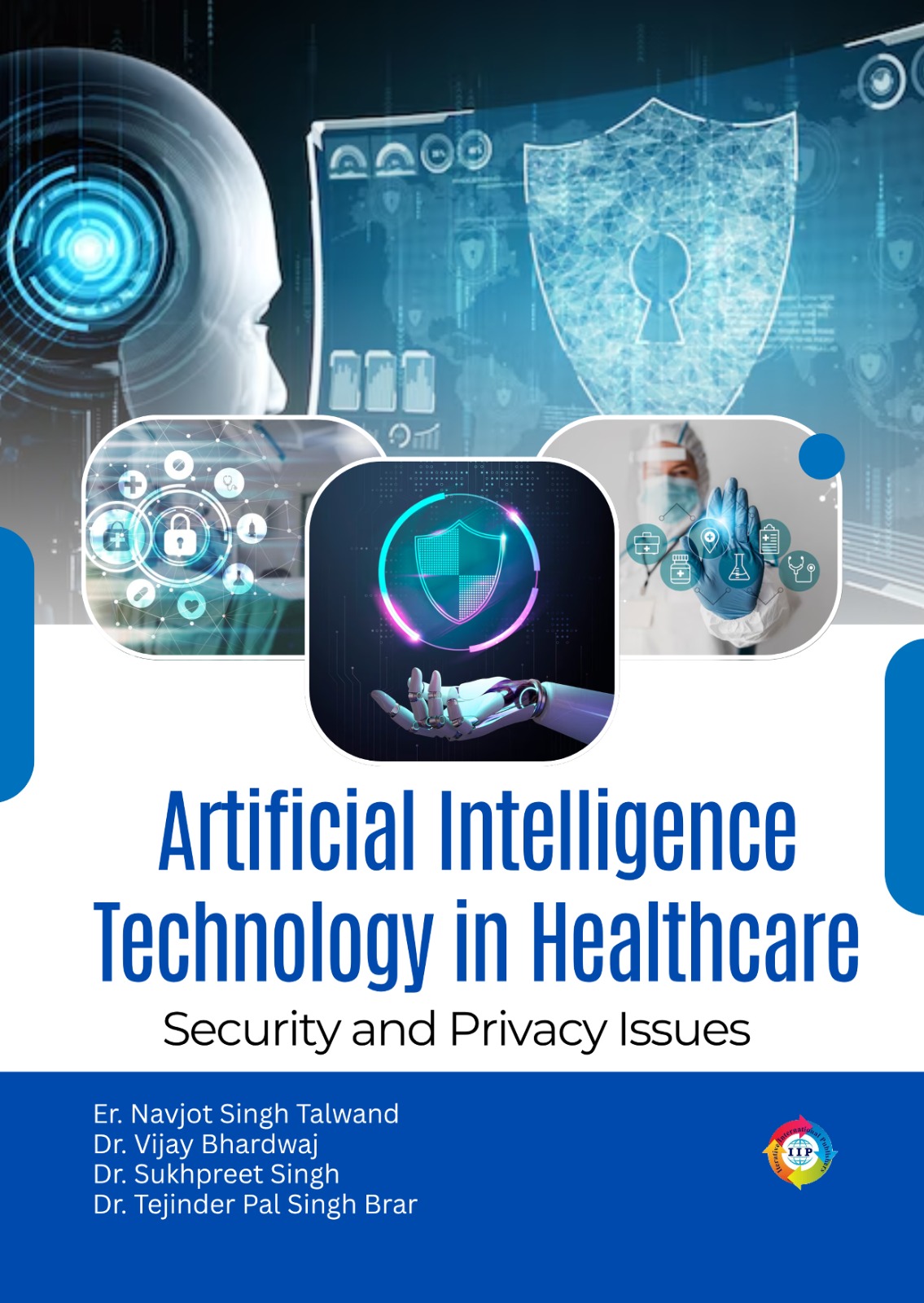
Artificial Intelligence Technology in Healthcare: Security and Privacy Issues
Buy Nowe-ISBN : 978-93-7020-030-2
Publisher : Iterative International Publishers (IIP), Selfypage Developers Pvt Ltd.
Volume : 4-2025
AIM & SCOPE
The integration of Artificial Intelligence (AI) into the healthcare sector has revolutionized clinical decision-making, diagnostics, patient monitoring, and administrative efficiency. However, as digital transformation accelerates, it brings with it a pressing concern: the security and privacy of sensitive health data. The increasing reliance on interconnected systems, cloud-based platforms, and AI-driven analytics presents new vulnerabilities that traditional security models struggle to address. This book, Artificial Intelligence Technology in Healthcare: Security and Privacy Issues, examines the crucial intersection of AI applications and cybersecurity within the healthcare domain. It explores how machine learning (ML) and AI can both enhance and challenge the existing frameworks designed to protect patient information and ensure system integrity. Through a comprehensive collection of chapters authored by researchers and experts in the field, this volume presents a wide spectrum of topics—from secure AI model design, privacypreserving data sharing techniques, and adversarial threats to ethical considerations and regulatory compliance in healthcare AI deployment. Each chapter balances theoretical insights with real-world implementations, offering a practical perspective on mitigating risks in AI-driven healthcare environments. Our goal is to provide readers with an in-depth understanding of the emerging security and privacy challenges brought by AI technologies in healthcare, along with innovative approaches to address them. This book serves as a valuable resource for healthcare professionals, cybersecurity researchers, policy makers, AI developers, and students alike. As the healthcare landscape continues to evolve, we hope this book contributes meaningfully to safer, more resilient, and ethically guided AI adoption in healthcare systems worldwide.
Chapter 1
INTRODUCTION TO DATA SCIENCE
https://www.doi.org/10.58532/nbennurAITH1
Chapter 2
STATISTICS AND PROBABILITY FOR DATA SCIENCE
https://www.doi.org/10.58532/nbennurAITH2
Chapter 3
PROGRAMMING FOR DATA SCIENCE: PYTHON, R, SQL, AND NOSQL
https://www.doi.org/10.58532/nbennurAITH3
Chapter 4
DATA WRANGLING AND PREPROCESSING FOR DATA SCIENCE
https://www.doi.org/10.58532/nbennurAITH4
Chapter 5
EXPLORATORY DATA ANALYSIS AND VISUALIZATION
https://www.doi.org/10.58532/nbennurAITH5
Chapter 6
MACHINE LEARNING FUNDAMENTALS FOR DATA SCIENCE:ALGORITHMS, EVALUATION, AND APPLICATIONS
https://www.doi.org/10.58532/nbennurAITH6
Chapter 7
DEEP LEARNING FOR DATA SCIENCE: ARCHITECTURES, ALGORITHMS, AND REALWORLD APPLICATIONS
https://www.doi.org/10.58532/nbennurAITH7
Chapter 8
BIG DATA TECHNOLOGIES AND CLOUD COMPUTING FOR DATASCIENCE ANALYTICS
https://www.doi.org/10.58532/nbennurAITH8
Chapter 9
ARTIFICIAL INTELLIGENCE IN HEALTHCARE: TRANSFORMING MEDICAL PRACTICE AND FUTURE PROSPECTS
https://www.doi.org/10.58532/nbennurAITH9
Chapter 10
REGULATORY FRAMEWORKS FOR AI IN HEALTHCARE:COMPLIANCE AND STANDARDS
https://www.doi.org/10.58532/nbennurAITH10
Chapter 11
THE FUTURE OF SECURE AND OBLIGATORY COMMUNICATION: BLOCKCHAIN APPLICATIONS FOR SECURE 6G COMMUNICATIONS
https://www.doi.org/10.58532/nbennurAITH11
EDITORIAL BOARD MEMBERS
Er. Navjot Singh Talwandi
Assistant Professor
Chandigarh University
specializing in Artificial Intelligence (AI)
Machine Learning (ML),Cybersecurity, and Data Science.
Dr. Vijay Bhardwaj
Professor
Chandigarh University, Punjab.
Dr. Sukhpreet Singh
Assistant Professor
Department of Computer Science and
Engineering at AIT
Chandigarh University, Mohali.
Dr. Tejinder Pal Singh Brar
Professor at MMICT
MMU (Deemed University)
Mullana Ambala.
